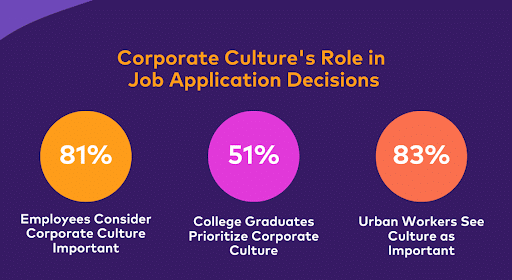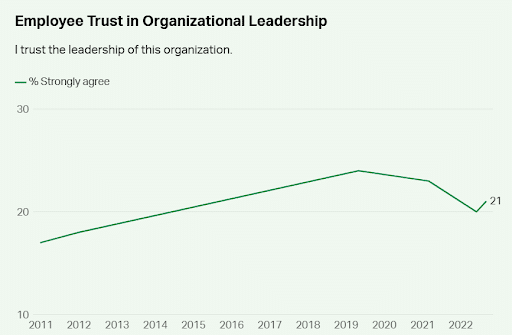Table of Contents
The majority of our waking hours as adults are spent in our work environment. It’s worth the effort to build a positive workplace culture, even if an environment where communication flows freely and employee satisfaction is off the scale sounds like a fictitious utopia.
It’s true that where there are many different people from all walks of life, there will be differences. But there’s a very simple yet powerful tool that helps keep those differences from becoming organizational chasms – the internal blog.
Workplace culture isn’t just about office perks or mission statements. It’s about the daily interactions, values, and sense of belonging that shape employee experiences. Having a strong culture means more employee engagement, better collaboration, and improved retention.
An internal blog helps reinforce these cultural values by providing a consistent platform for communication and connection.
If you (or your boss) need more convincing about the merits of a good internal blog, we’ve created this data-backed resource for six key ways an internal blog builds a strong culture.
Why Cultivate Workplace Culture?
Aside from the obvious fact that a more positive environment is a more pleasant place to be for everyone, there are several data-backed reasons why making an effort to cultivate workplace culture matters.
It’s important to talent: When seeking a new job, 81% of job seekers say workplace culture is important. 58% would leave for a company with a better culture, and 78% feel demotivated by a bad culture fit.

Image Source – Gallup
It increases revenue: According to Gallup research, companies that prioritize culture see a 33% increase in revenue. A possible reason is that employees feel happier and more motivated in positive environments, so productivity increases.
It reduces employee turnover: Creating a workplace culture of positive engagement will keep employees around and save you the soaring cost of replacing them.
The advantages of a positive culture are clear. But how does your internal blog give you these wins?
Pro tip: To unify communication tools, a virtual office management software can help as it will help remote teams manage both synchronous and asynchronous workflows.
Enhances Leadership Transparency
Gallup Workplace Research shows that trust in leadership dipped during the pandemic and is struggling to re-emerge.
Clear communication is the nucleus of good leadership. The Gallup research found that at the start of the pandemic, 55% of employees strongly agreed that their leaders actively and clearly communicated a plan of action.

Image Source – Gallup
That number had fallen to only 22% by 2022. Once the crises had passed, some leaders forgot the lessons of transparent communication and showing up as a person first and a leader second.
But, as a good leader, you have the opportunity to continue that trajectory of trust.
According to Forbes, 63% of employees of transparent organizations would strongly recommend their workplace. By contrast, only 6% said the same in organizations with closed communication channels.
The numbers are in. Transparent leadership builds a strong workplace culture, one that builds trust and employee retention.
Cultivates Positive Tribalism
Humankind’s tribal nature is a well-understood phenomenon. We are overwhelmingly inclined towards homophily, sameness. We tend to gravitate towards those like us, whom we perceive as our ‘tribe’.
We most often hear about tribalism in the workplace as a negative – employees forming cliques and isolated groups to launch passive-aggressive warfare on whomever they have identified as ‘other’.
However, tribalism does not have to cause isolation. In fact, with good leadership, the opposite of isolation can occur. You can build a workplace culture that sees the whole organization as its tribe.
Clear, inclusive communication builds strong bonds between those who are communicating. It’s in our DNA. This is precisely what good internal communications accomplish for your organization.
Mitigates a Siloed Workplace Culture
Silos form in your organization when information flow is minimized or nonexistent. Whole teams operate independently of one another and without any information about what everyone else is doing.
Not only is a siloed company culture woefully inefficient, but it also hurts employee morale and prevents them from feeling part of the bigger picture.
Streamlined and centralized communication mitigates this.
Understanding how work gets done can also help improve collaboration. Tools like employee monitoring software provide insights into workflow patterns and where collaboration and communication are breaking down.
You can also use the data to pinpoint where employees need more support or guidance, allowing you to write content more relevant to their daily challenges.
Improved Onboarding Experience
Gallup reveals that only 12% of employees say their company has a good onboarding process. Nearly one in five employees reports having no onboarding process at all.

Image Source – Gallup
Structured onboarding takes time and thought and sometimes falls through the cracks in a heavy HR workload. But 70% of employees who had a good onboarding experience believe they have the best possible job.
‘First impressions matter’ is as true in the workforce as it is anywhere else. An active internal blog begins the employee experience on the right foot by fostering a positive work environment characterized by friendly communication and company-wide collaboration.
It not only makes employees feel at home quicker, but it gets them up to speed in a timely manner. Use your internal blog to your advantage and make it part of the onboarding process by creating streamlined, easily readable documents in one place.
It’s also a good opportunity to adopt compliance training software. Writing about the software on the blog helps employees understand important regulations, ethical standards, and company policies.
Highlight key training modules or success stories of employees who’ve benefited from it to help new hires engage with the compliance process, and complement these initiatives with corporate event photography that showcases team culture and reinforces a sense of belonging.
Pro tip: A paraphrase tool is handy for condensing industry jargon into straightforward language. Employees have different qualifications and come from diverse backgrounds, so simplifying sentences while retaining key messages helps ensure comprehension and onboarding effectiveness.
Decreased Meeting and Email Overload
‘This meeting could have been an email’ is a popular meme for a reason. According to data analyzed by Flowtrace, employees consider 71% of meetings unproductive. Yet 83% spend up to one-third of their workweek in meetings.
It gets worse the higher up you are on the chain of command. Senior leadership spends 50% of their time in meetings, and middle management spends 35%. CEOs spend a whopping 75% of their time in meetings. Yet most feel like nothing’s getting done.
With an internal blog, you can easily communicate with the entire organization in a centralized place, reducing an organizational culture of endless meetings and emails.
If something needs to be said, it can be said to everyone at once, without the need to book a dozen one-on-ones and disrupt everyone’s day.
This helps promote a positive workplace culture where informational exchange does not seem superfluous and meaningless.
Encourages Open Dialogue
An active internal blog promotes employee engagement. The more employee engagement, the more a positive company culture is established. This free exchange of information becomes a safe place to ask questions and learn new things.
This is where great innovation happens. In the free exchange of ideas. In toxic cultures, fear permeates, and it keeps your brightest minds from sharing their best ideas because so much of their mental energy is swallowed by the anxiety of putting a foot wrong or looking foolish in front of their colleagues or supervisors.
The term ‘psychological safety’ was first used by Amy Edmondson, Professor of Leadership and Management at the Harvard Business School, in 1999.
Her definition of the term is, “A belief that no one will be punished or humiliated for speaking up with ideas, questions, concerns, or mistakes, and that the team is safe for interpersonal risk-taking”.
In the modern workforce, psychological safety is second in importance only to regular pay raises and flexible work hours for employees. So cultivate safe, open dialogue as a core value of your institution.
Building a Healthy Workplace Culture
Creating a positive workplace culture is not just about creating a pleasant work environment. It’s a strategy that drives employee well-being, operational efficiency, and overall organizational success.
Building a strong culture will take some effort, but it doesn’t have to break the bank. You can start an internal blog with a simple website builder or try our all-in-one employee engagement solution that combines internal communication, engagement, recognition, intranet, and measurement.
What matters is that you’ve created the pathway toward communication and facilitated conversations across your organization.
Read more on KulFiy.
About the author: Ryan Robinson
Ryan Robinson. I’m a blogger, podcaster, and (recovering) side project addict who teaches 500,000 monthly readers how to start a blog and grow a profitable side business at ryrob.com.
